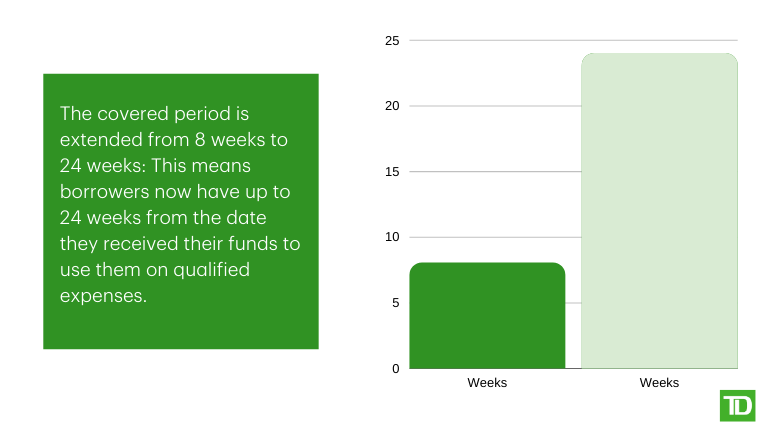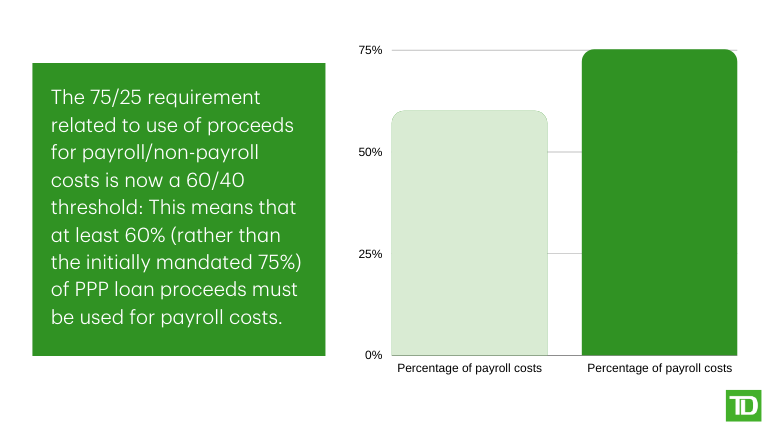Recent changes can help PPP recipients optimize loan forgiveness
Since the Paycheck Protection Program (PPP) opened, there have been questions from businesses and nonprofits alike about the program requirements, including exactly how loans would be forgiven.
The loans, administered by the U.S. Small Business Administration (SBA), are eligible for full forgiveness if certain requirements are met.
Congress recently passed the Paycheck Protection Program Flexibility Act, which makes significant changes to PPP terms, including forgiveness. Loan forgiveness is not automatic and must be requested by the customer. TD is actively working to develop a digital forgiveness application to reflect these changes as well as anticipated additional guidance.
Some of the key changes to the program include:
- The covered period is extended from 8 weeks to 24 weeks: This means borrowers now have up to 24 weeks from the date they received their funds to use them on qualified expenses. This is a much-needed change for the many businesses across the country who are still in mandated or phased shutdowns and therefore may not have been able to fully use their loan proceeds in 8 weeks.

- The 75/25 requirement related to use of proceeds for payroll/non-payroll costs is now a 60/40 threshold: This means that at least 60% (rather than the initially mandated 75%) of PPP loan proceeds must be used for payroll costs, including employee benefits, tips, commissions and state and local payroll taxes.

- PPP loan payments deferred: Rather than a 6-month deferment, loan payments are deferred until the date that the SBA remits the borrower’s loan forgiveness amount to the lender. For borrowers who don’t apply for forgiveness, loan payments are deferred for 10 months after the end of their covered period. Interest still accrues during any deferral period.
- Safe harbor update: The safe harbor from reductions in loan forgiveness based on reductions in full-time equivalent employees was expanded.
The SBA has indicated that they will be issuing revised forms and additional guidance as a result of the PPP Flexibility Act. TD will continue to closely follow government and industry updates and work to update this information as additional guidance becomes available.
In the meantime, businesses may want to begin gathering the following documents to help when it's time to apply. These may include:
- Bank account statements or payroll service reports documenting wages paid to employees
- Federal and State payroll tax filings
- Business mortgage account statements showing interest paid
- Business rent or lease payment statements
- Business utility payments (e.g., electric, gas, water, transportation, telephone or internet)
For additional information and the most updated guidance, please continue to visit the SBA and Treasury websites.
